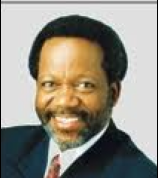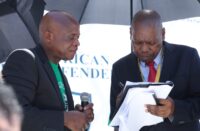
Originally published in forsa.org.za
A mere six weeks after the case was argued in court, the Johannesburg High Court this morning delivered its much-anticipated judgment in the case of OGOD v six public schools regarding religion in schools.
REACTION TO RULING
FEDSAS

The Federation of Governing Bodies of South Africa (FEDSAS) assisted the schools in the court case.
Paul Colditz CEO of FEDSAS said: “The court has confirmed that public schools may not promote a specific religion to the exclusion of others and that a public school may not hold that it promotes the interests of one religion. The court turned down most of the application. At the core of the judgement lies the fact that religion may form part of a school’s setup but that it should take place within the framework of Section 15 of the constitution.
“From the outset FEDSAS has been clear that practicing religion in schools should be voluntary. However, FEDSAS was against the removal of any form of religious activities from schools. This decision is not similar to the America model of separation between church and state. Rather, it confirms the South African Constitution’s focus on tolerance and diversity.
Colditz says FEDSAS will study the court’s decision and the implications thereof in order to allow FEDSAS members make informed decisions.
CAUSE FOR JUSTICE
Cause For Justice (CFJ) is a Friend of the Court in the Case. In a media statement released today CFJ said: “We found the court’s reasoning/ motivation for granting partial relief to the applicant surprisingly thin. The court based its finding on the need to embrace and celebrate diversity, by acting even-handedly in relation to different religions, and not merely tolerating diversity. The court again confirmed that South Africa is not a secular State.
“In our view, the court’s decision has affirmed the place of religion in the public sphere, specifically in public schools, whilst requiring schools to not brand themselves in a manner that could be excluding of minorities.”
more…
ACDP

Welcomes ruling confirming religious observances such as teaching bible in schools, may be conducted at state or state-aided institutions
Welcomes non-discrimination regarding other faiths and clarity regarding school governing bodies’ role
more…
The Court order reads as follows:
“(a) It is declared that it offends s 7 of the Schools Act, 84 of 1996 for a public school
- To promote or allow its staff to promote that it, as a public school, adheres to only one or predominantly only one religion to the exclusion of others; and
- To hold out that it promotes the interests of any one religion in favour of others.
(b) The remainder of the relief claimed is refused.
(c) There is no order as to costs.”
Partial success
This means that OGOD, the atheist organisation who took the six schools (all of whom have a Christian ethos and/or promote Christian values) to court, was only partially successful in its application in that:
- On the one hand the court, as a matter of principle, agreed with OGOD that public schools may not favour one religion over another, and issued a declaratory order (applying to all 24 000 public schools in SA) in these terms. (In this regard, we explain that the effect of a declaratory order is simply that: it is a declaration of legal rights or status, without also ordering a party to do (or not to do) something.)
- On the other hand the court, for technical reasons, was not prepared to go so far as to grant the interdictory relief (i.e. an order restraining the schools from partaking in 71 different practices, ranging from religious singing and prayer to teaching creationism) asked for by OGOD against the schools. (As will be explained hereunder, however, this does not mean that public schools have a legal right to continue such practices at their schools!).
The effect of the order is that, although the schools — or the school governing bodies (SGBs) — are not specifically ordered to do (or not do) something by the court, the declaratory relief and judgment, in the words of the court, “may legitimately serve as a guide to them”.
In other words, while the SGB rules stand until set aside (or amended by the SGBs or on direction of the MEC for Education), SGBs have to go back to the drawing board and at grassroots level, assess (taking into consideration the imperative for diversity embodied in the constitution and national and provincial legislation, and in consultation with the department of education) whether their religious policies and rules (including religious observances) are legally compliant or not and make the necessary adjustments.
Importantly, the judgment confirms that South Africa is not a secular State and further upholds section 15(2) of our constitution, in terms whereof religious observances (which have to be given an “expansive meaning” and includes “all forms of external manifestation of religion, conscience and belief”) may be conducted at State or State-aided institutions (including therefore public schools), on the following conditions:
- That those observances follow rules made by the appropriate public authorities, which the court interpreted as referring to the SGBs in consultation with the department of education. In this regard, it is also important to note the court’s finding that if outside religious instructors were to be permitted on school premises, it will occur only if the SGBs laid down the conditions under which this would occur;
- That observances are conducted on an equitable basis, which the Court interpreted as “demand[ing] the state [to] act even-handedly in relation to different religions”; and
- That attendance is free and voluntary.
The judgment
The judgment, which was delivered by Judge Van der Westhuizen (with judges Lamont and Siwendu concurring), identifies the true issues as follows:
- Whether a public school may hold itself out as a Christian school, and if so to what extent;
- Whether a public school may conduct religious observances, and the extent to which these may be religion-specific; and
- Whether a learner may be asked to convey whether or not he/she adheres to a particular (religious) faith.
In answering these questions, the court turned to the constitution as the starting point and found that in view of the fact that “South Africa belongs to all who live in it, united in our diversity” (preamble to the constitution), the approach to be adopted is one of neutrality and even-handedness; the state should not be seen to be picking sides in matters of religion.
Turning next to a discussion of the relevant provisions in the constitution, national and provincial legislation, the court finds that it is the responsibility of SGBs to determine the religious policy (“rules”) of public schools – but that this has to be done subject to the constitution, national and provincial legislation (all of which point to a need to respect diversity), and also in consultation with the department of education who must vet the policy. (On a technical point, the court found that as the SGBs themselves have not been joined as parties to the dispute, interdictory relief was not available against the schools).
Having considered this “body of laws” dealing with religious matters (including religious observances) at schools, the court, on a further technical point, found that it was not open to OGOD to rely directly on the constitution as it has done. What OGOD should have done in bringing the matter to court, is to have attacked either the schools’ conduct on the basis that it violates the SGB’s rules, or to have attacked the rules itself on the basis that it violates the Schools Act (“the principle of subsidiarity” which requires that an applicant makes it pathway from the bottom up, starting with the SGB rules, then the provincial and national legislation, and ending only with the constitution).
The court then turned to deal with the National Religion Policy, which it found (in favour of the schools, and against the minister of education) was not enforceable against schools as if it was law. The court found that the policy does have “intra-governmental force as a policy direction” however, in that it will inform the department of education in so far as they deal with and have to vet SGBs’ religious policies.
The final pages of the judgment, focus on the issue of “single faith branding”. The question the court asked, was “may a public school, through rules laid down by its SGB relative to say its heraldry, hold out that it is exclusively a Jewish, or a Christian, or a Muslim, or a Buddhist, or an atheist, school” – even when 100% of the learners / parents in that school, are Jewish, Christian, Muslim, Buddhist or atheist?
In this regard, the court found as follows: Public schools are juristic entities and organs of state. The constitution recognises that the society within which public schools function, is diverse. Our Constitutional Court has on many occasions recognised the need to celebrate this diversity, and the concept of the unity of our nation from this diversity. This is echoed by the Schools Act. SGBs are thus required to respect this overarching constitutional theme of diversity. Neither the constitution, nor the Schools Act confers on a public school or SGB the right to adopt the ethos of one single religion to the exclusion of others.
Turning then to the question posed at the outset, namely whether a public school may hold out that it has adopted one religion to the exclusion of others, the Court “suggested” that the answer is “no” for the following reasons:
- First, feeder communities continually evolve and must be encouraged to evolve (in other words, the argument that the feeder community of the school is virtually 100% Christian and for that reason the school has a Christian ethos, is not sustainable);
- Second, in the case of the minority religion (or non-religion) affiliated learning who has not choice but to attend a particular school with a religious ethos other than his/her own, “could” (although this will not always and not necessarily be the case) feel a sense of inferior differentness; and
- Third, a single faith brand that excludes others, would misrepresent the legally-required position (that learners of all faiths are / should be welcome).
It is open to any of the parties to appeal the judgment (probably to the Supreme Court of Appeal) within the required time periods for applications for leave to appeal, which is three weeks from the day of judgment.







Very worthwhile explanation. The reporting of thus judgment in the press and talk show radio is aimed mainly at the secular world so it might have led to wrong understanding.